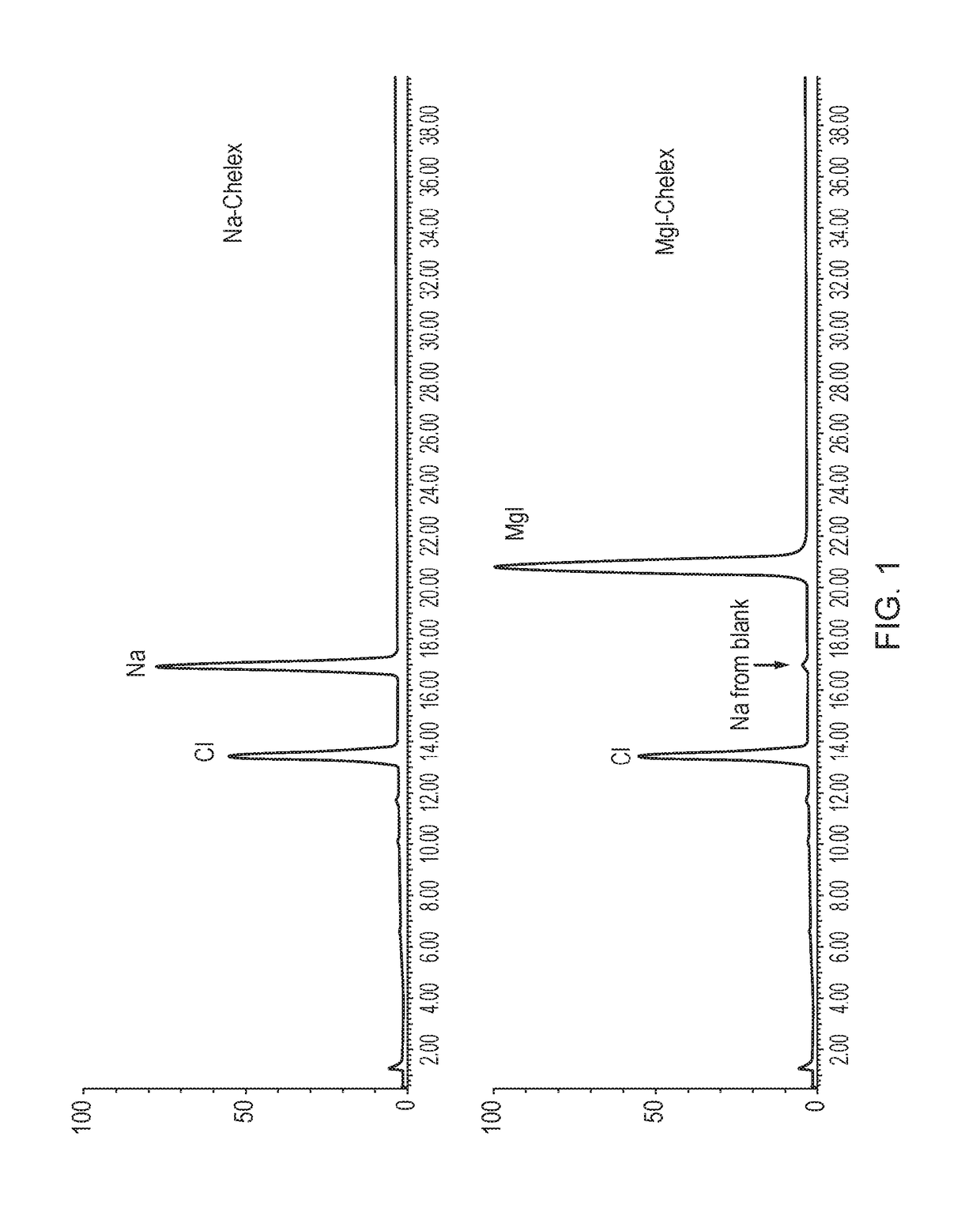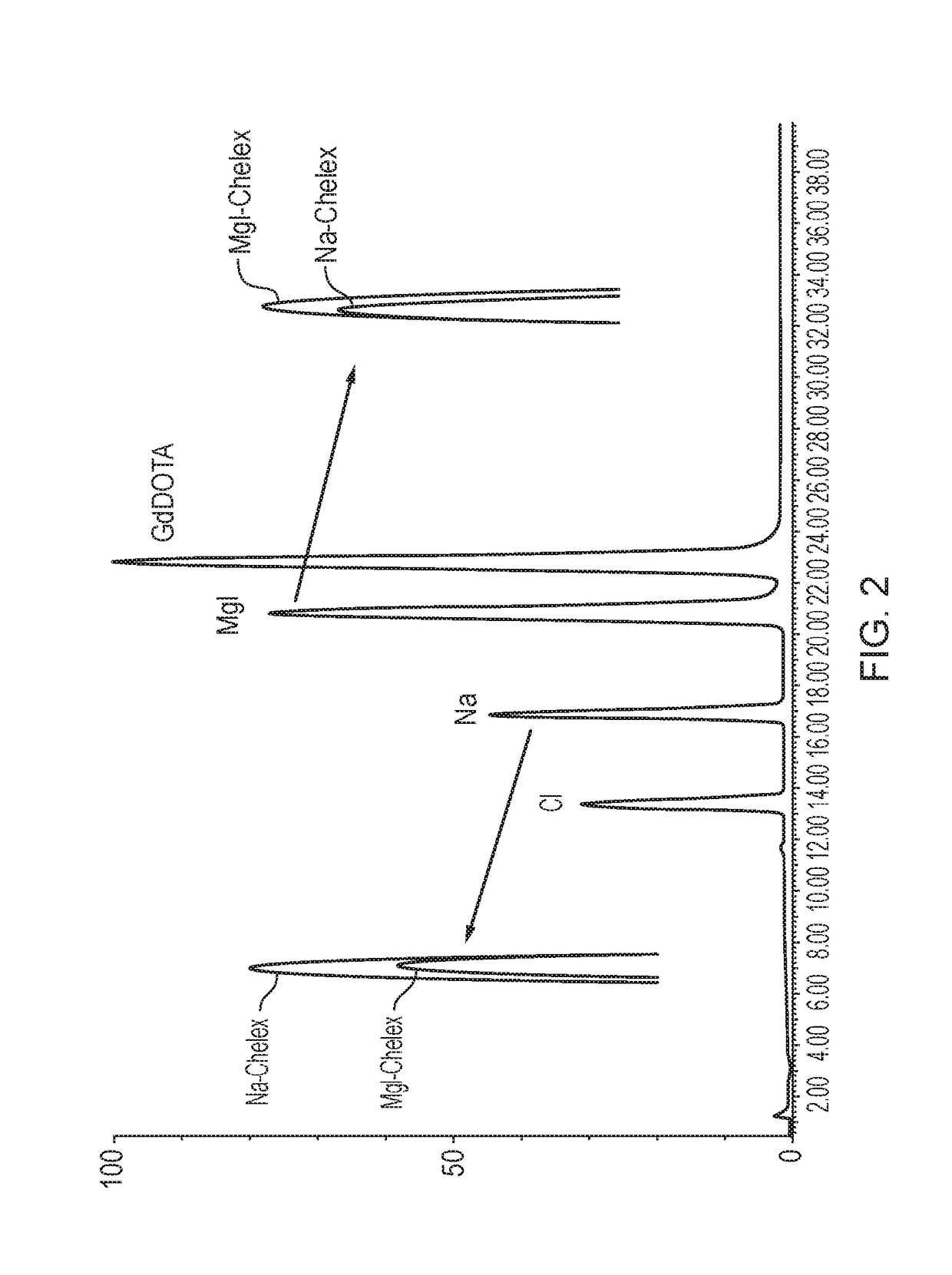Lanthanide complex formulations
- Summary
- Abstract
- Description
- Claims
- Application Information
AI Technical Summary
Benefits of technology
Problems solved by technology
Method used
Image
Examples
example 1
Preparation of Megluminized Chelex® Resin (“Meg-Chelex”)
[0130]Chelex-100 resin (Sigma-Aldrich; 100 g) on a sintered glass filter was treated with 1M HCl (1 L) in 4 portions over 4 h. The resin was then washed with water until the eluent was pH 6.5, and a solution of meglumine (10 g) in water (400 mL) was equilibrated with the resin over a period of 1 h. The resin was again washed with water to pH 8, and then filtered and dried under vacuum for a minute to give the moist resin, which is used in this form (“Meg-Chelex”).
example 2
Removal of Gadolinium Ions Using Chelex® Resin
[0131]A gadolinium chloride reference solution was treated with either standard Chelex (sodium ion form; “Na-Chelex” or megluminized Chelex (Example 1; “Meg-Chelex”):
[0132]To each moist Chelex (Na or meglumine) resin (0.5 g) was added 5 mL of a GdCl3 reference solution (1 mg / mL). The suspension was then left on a shaking table overnight at 30° C. HPLC-CAD analysis (using the method of Example 4) of the suspensions indicated that there was no sodium contamination of the gadolinium solution treated with Meg-Chelex, whereas the solution treated with Na-Chelex had a much higher sodium ion concentration. Colorimetric assay with Arsenazo III indicated no free gadolinium in either solution. The results are shown in FIG. 1.
example 3
Removal of Gadolinium Ions from a Gd-DOTA Preparation Using Chelex® Resin.
[0133]A Gd-DOTA-meglumine reaction mixture (concentration ˜380 mg / mL) containing a known excess of free gadolinium (160 μg / mL) was treated with standard (Na-Chelex) or megluminized (Meg-Chelex) Chelex:
[0134]To 0.5 g of the moist Chelex resin (Na-Chelex or Meg-Chelex; Example 1), was added a 5 mL aliquot of the above Gd-DOTA-meglumine / free Gd mixture. The suspension was left on a shaking table overnight at 30° C.
[0135]HPLC-CAD analysis (using the method of Example 4) of the resulting suspensions indicated no additional sodium contamination (DOTA containing some sodium ions was used) of Meg-Chelex treated gadolinium solution, whereas Na-Chelex treated solution had increased levels of sodium. Colorimetric assay with Arsenazo III indicated no free gadolinium in either solution. The meglumine concentration in the Meg-Chelex treated reaction mixture was slightly increased, indicative of gadolinium exchange. The resu...
PUM
 Login to View More
Login to View More Abstract
Description
Claims
Application Information
 Login to View More
Login to View More - R&D
- Intellectual Property
- Life Sciences
- Materials
- Tech Scout
- Unparalleled Data Quality
- Higher Quality Content
- 60% Fewer Hallucinations
Browse by: Latest US Patents, China's latest patents, Technical Efficacy Thesaurus, Application Domain, Technology Topic, Popular Technical Reports.
© 2025 PatSnap. All rights reserved.Legal|Privacy policy|Modern Slavery Act Transparency Statement|Sitemap|About US| Contact US: help@patsnap.com



